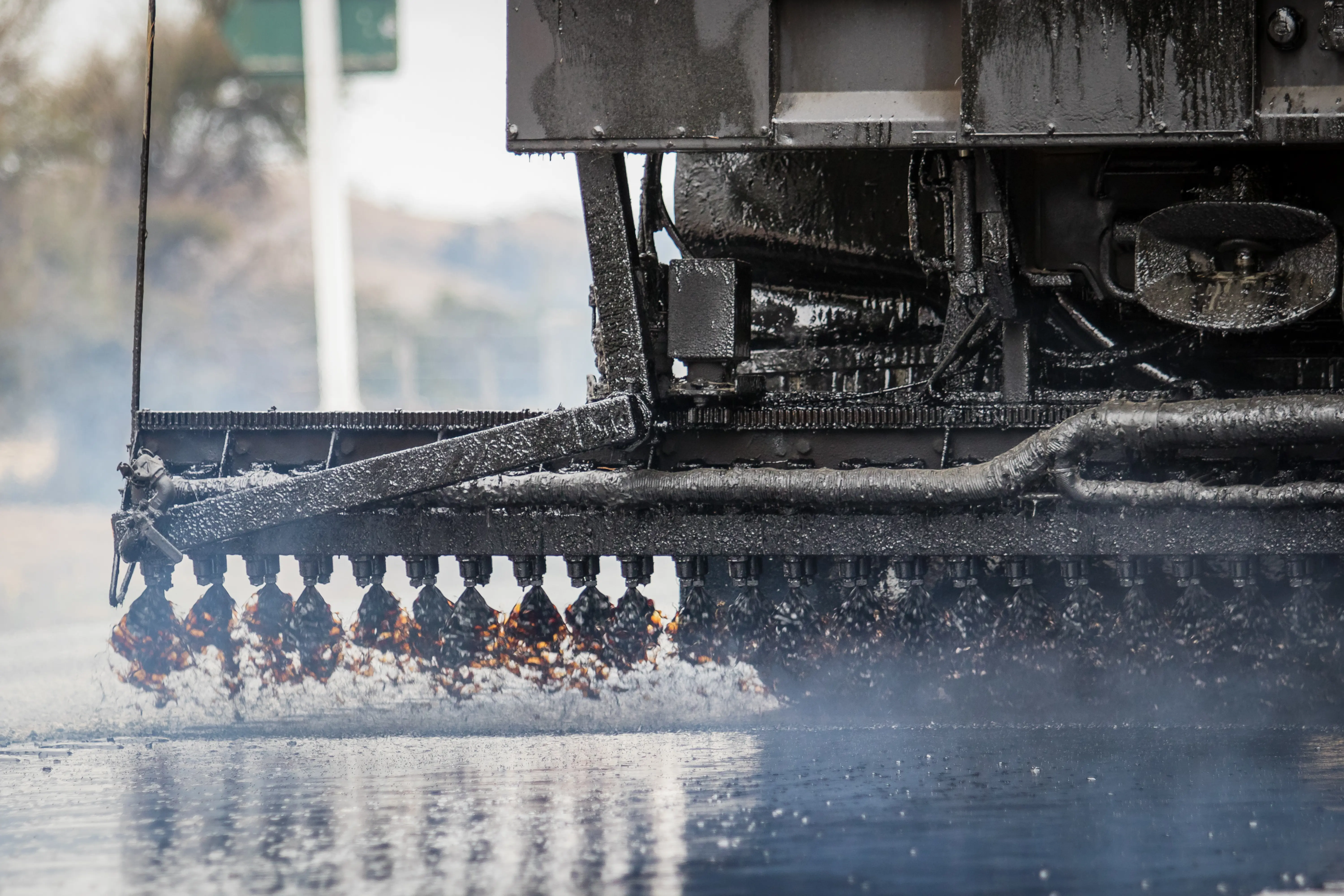A fresh new look for our roads: The science (and art) of chip sealing
21 Oct 2025
Ever wondered why sometimes the road looks like it’s getting a fresh layer of gravel — and why it smells a little like a summer barbecue gone rogue? That’s chip sealing in action! It’s part of our ongoing resurfacing programme that keeps your rides smooth, safe, and waterproof.
What is chip sealing, anyway?
Chip sealing is like giving a road a rejuvenating facial. First, we spray a layer of bitumen (a sticky tar-like liquid) over the old surface. Then we spread a layer of small, clean stones or “chips” on top. Rollers and your vehicle’s tyres help press these chips into the bitumen to form a strong, waterproof, skid-resistant surface.

Timing is everything
Chip sealing is best done in warmer, dry months when the bitumen can cure properly. Most resurfacing takes place between October and February, before summer heat makes the bitumen too soft to handle.
Each section of road usually takes just one or two work shifts to complete, depending on its length. Rural and residential stretches might be done in a single day, while busier areas could take a little longer.
Wherever possible, we plan with care to get the job done efficiently while minimising inconvenience. And yes, everything depends on the weather! Rain and chipseal are sworn enemies — if it pours, we pause. We’ll always reschedule to the next suitable day.
How to drive on freshly sealed roads
That crunchy sound of chips under your tyres might make you nervous — but don’t worry, it’s normal! You’re helping us “trafficate” the road — pressing the new chips into the surface. To do this safely we suggest the Goldilocks theory. Too fast causes damage to your vehicle, too slow and the road sticks to your vehicle, but driving just right is best and helps settle the new road surface!
Following these tips to protect your car’s paintwork, everyone’s windscreens, and help settle the road surface:
- Slow down early: Obey the temporary speed signs - usually 30km/h for the first day, then 50km/h for the next couple.
- Keep your distance: An extra car length helps avoid flying chips.
- Go easy on the brakes: Gentle driving helps the chips settle properly.
- Be patient: Don’t speed up until you’re clear of the cones.
Looking after everyone’s safety
Temporary speed limits and traffic management are in place to protect road users and workers alike. One small mistake could have serious consequences, so please obey signs and slow down through work zones.
Please keep pets well clear of worksites. The machinery can be noisy and scary, and loose chips can be sharp on paws.
Keeping you in the loop
Before work begins on your street, residents will receive a letter explaining what’s happening, when, and the impact. You’ll also get a contact number if you have any questions. You can find the programme on our website.
Parking and access
When resurfacing is planned near your property, please don’t park on the road. This helps protect your car and gives our crews room to work safely and efficiently. Once the surface has settled and the excess chips have been swept away, things will return to normal.
Thanks for your patience!
We know roadworks can be inconvenient, but they’re an essential part of keeping our communities connected and safe. Chip sealing extends the life of our roads, saves money on repairs, and makes for smoother, safer journeys for everyone.
So next time you pass a work site and see those shiny new chips glistening in the sun, give a friendly wave — you’re looking at your rates at work, paving the way (literally!) for a better, safer drive ahead.